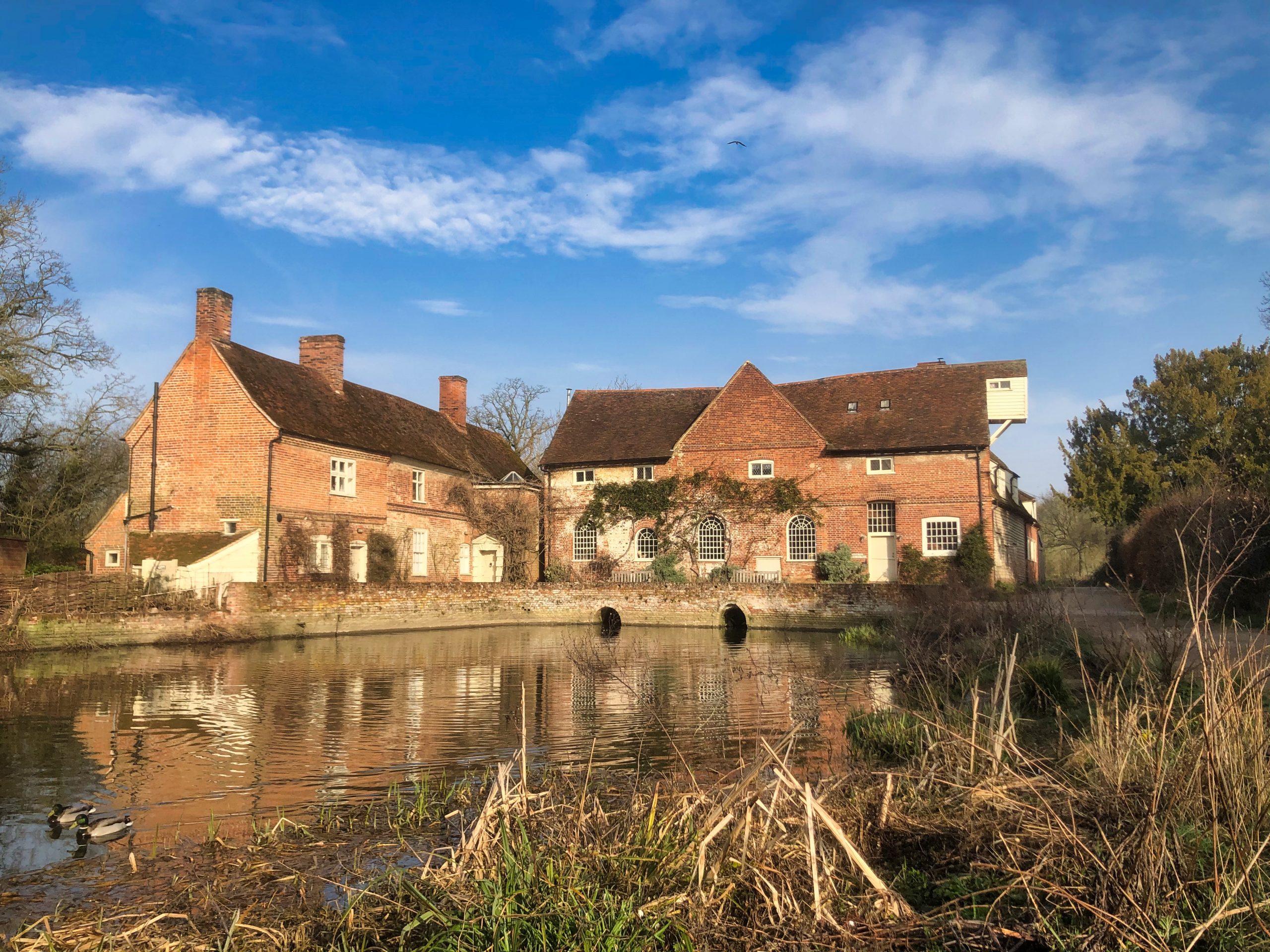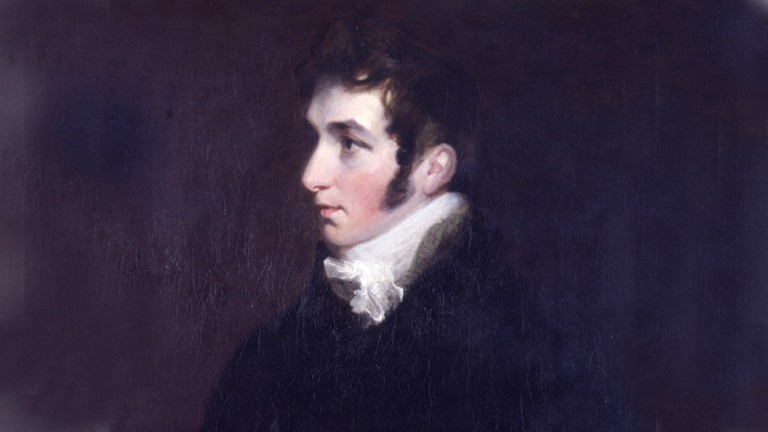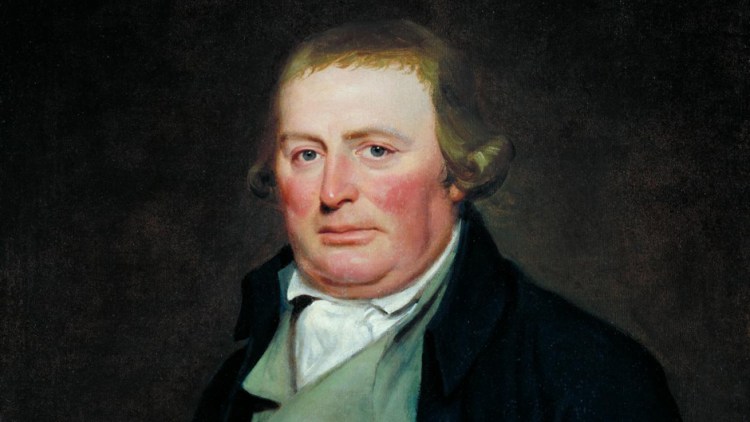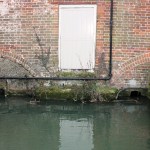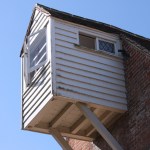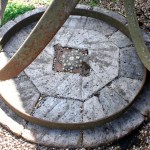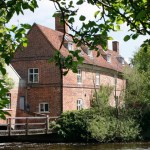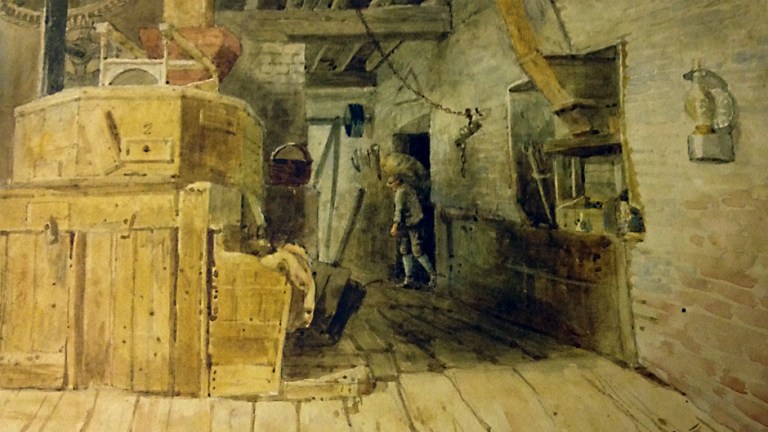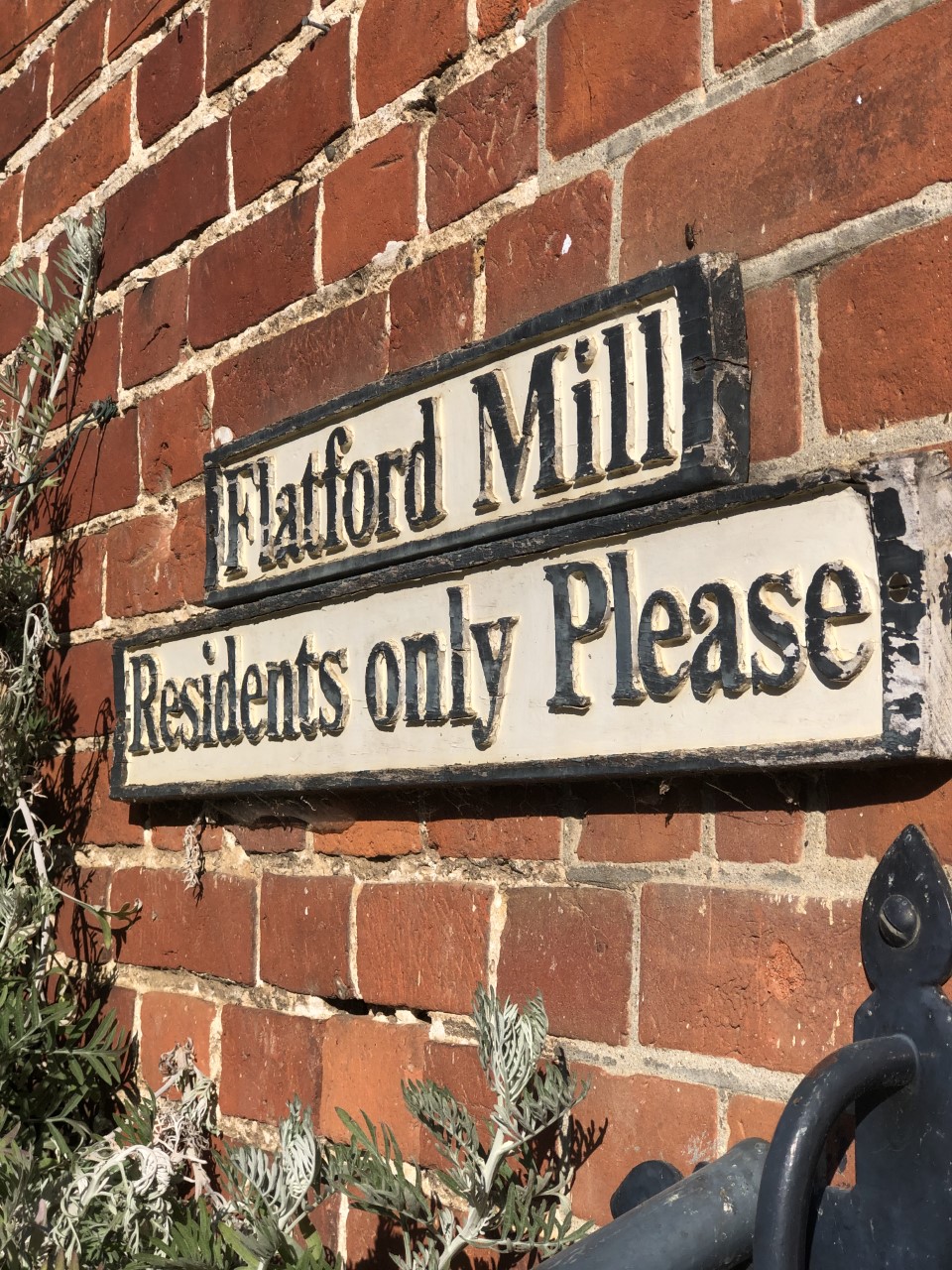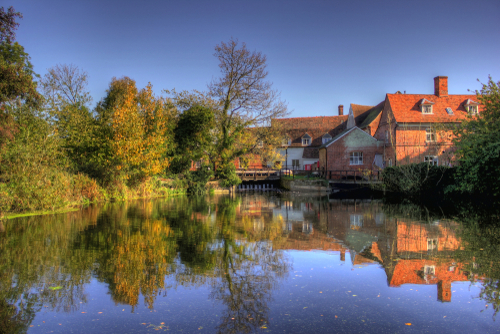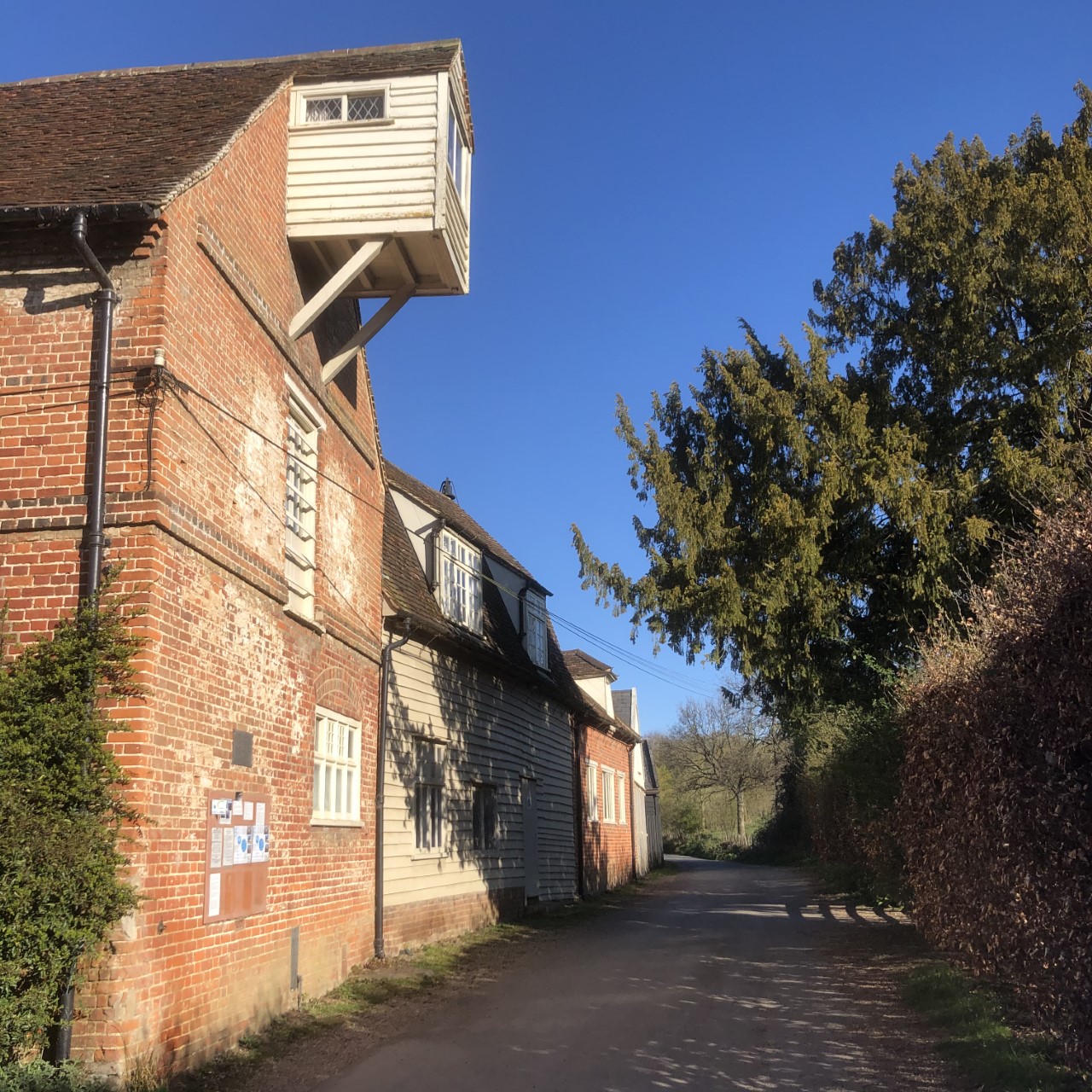Flatford Mill
Flatford Mill, immortalised by John Constable and his painting of The Haywain and the Mill which is as recognisable today as it was then.
Attached to the Mill, is the 17th Century Millers cottage
- 32
- A Grade 1 listed watermill on the River Stour at Flatford
- 51.95868, 1.021513
Details
BEFORE THE CONSTABLES
Early Flour Production
Cereal grains form the staple food of many societies but such grains cannot easily be digested by humans until their hard outer cellulose shells have been broken up or removed. From earliest times this has been achieved by breaking open the grain between two stones. The first milling stones were hand-operated and are generally known as querns, a word derived from the Old English word cweorn. Most querns are made from stone, hence ‘quernstone’. The upper stone (the quern) was rotated over the lower stone (the handstone).
In the medieval period the use of querns was widely prohibited as many manorial tenants were compelled to have their grain ground at the manorial mill, which could be some distance away, and to pay a toll for the privilege. Not surprisingly, some preferred to use their own querns and manorial accounts frequently contain references of fines for those not taking their grain to the lord’s mill.
It is generally accepted that the Saxons engineered the river and built most of the water mills.
By the time the Domesday Book was written in 1086 most of the villages along the River Stour had at least one water mill producing flour – mainly for the local populationThere has been a water mill at Flatford from at least the 11th Century – we know this because it is listed in the Domesday book of 1068. However, the Flatford Mill recorded in 1068 had been there some years by that time. It would have been a corn (flour) mill used for milling grain into flour.
Until the 20th Century Suffolk and Essex were dependant on farming. Because of the difficulty in transporting goods, people living in the villages had to be self sufficient and Flatford Mill would have produced most of the flour for the village’s inhabitants.
The Cloth Trade – 13th Century
Fulling was one of the many stages in producing cloth in the 13th century. Some flour mills in Suffolk were converted to mechanical fulling mills in order to process wool into cloth. Flatford Mill might have been amongst them.
By the beginning of the century the cloth trade in Suffolk began to grow rapidly and as it did so Suffolk was transformed into a very wealthy county.
Two phases of the Cloth Trade
- Up to1500 – East Bergholt and Flatford became wealthy during this first phase which peaked around 1500.
- Up to 1600 – the cloth industry had virtually disappeared by 1600. After that, East Bergholt may have continued to make a little old style cloth for the local trade but like many villages, it declined into a spinning village which earned very little money. Click here for more information about the Cloth Trade
Fulling Mills to Corn Mills
In 1742 it was acquired by Abram Constable who rebuilt and renovated the mill largely in brick which is what you will see today if you visit.
John Constable’s father (Golding) inherited Flatford Mill from his uncle Abram in the middle of the 18th Century.
FLATFORD MILL UNDER THE CONSTABLES
Abram Constable Snr – Mill Owner 1742-1768
In 1742 Abram Constable (John’s father’s uncle) bought Flatford Mill from Matthew Isaac who had owned it from 1731. Two millers were already working there at that time, Henry Crush and Samuel Lamb. Abram and his wife Isabel had no children and when they died, they left Flatford Mill to their nephew Golding, John Constable’s father. Golding Constable inherited the mill with resident miller Henry Crush still in post.
Flatford Mill would originally have been built out of wood. Abram rebuilt and repaired the buildings so what we see today is largely the result of his work. An inscription at the back of the Flatford Mill bears Abram and Isabel’s initials ‘AIC 1733’ although due to erosion of the stone, it often looks like ‘1753’. As the mill was not owned by the Constable family until 1742 and Abram Constable did not finish the rebuilding until 1753 this plaque is to mark the completion of his building work.
Although the inside of Flatford Mill has since been modernised to provide student accommodation, much of the exterior is unchanged from Abram’s time.
Abram Constable Senior’s Mill
During Abram’s time, Flatford Mill operated between two floors:
Floor One – the ground floor contained:
- Two pairs of millstones which were 4 feet in diameter. The millstones were held within strong timber frames on the ground floor. They were made up of separate pieces of stone (chalcedonic hornstone imported from France) held together by plaster of Paris with iron hoops running around their circumference.
· Two ‘undershot’ wooden water wheels which were 12 feet in diameter and 3 feet wide. Each water wheel was housed inside the mill and set within a channel of running water (a culvert).
How the millstones turned
- Water was fed from the River Stour into culverts through two entrance arches
- The force of the running water drove the waterwheels round and this motion provided the power to activate the mechanical shafts and hoists which turned the millstones
- The ‘used’ river water was fed outside into the mill pond via two exit arches which can still be seen today
Floor Two – the upper floor contained
- A dry storage space for sacks of grain and processed flour
- A hopper and chute by which grain was gravity-fed from the upper floor to the mill stones on the ground floor
- A lucam overhanging the road between the mill and the millpond, from where grain carried by farm carts was hoisted to the upper floor via a trap door
- A second lucam opening on the opposite side of the mill overhanging the river from where flour was lowered into waiting barges (also called lighters)
Golding Constable inherited Flatford Mill from his uncle Abram (Senior) Constable. Although Golding Constable continued to operate the mill very much as in his Uncle Abram Constable’s time.
However, his business ambitions far exceeded those of his uncle. Golding Constable was an entrepreneur. He owned Flatford Mill and a windmill at East Bergholt and also ran two sea-going Thames barges (the Balloon and the Telegraph) running between Mistley Wharf and London carrying wheat, barley, malt, flour, bricks, chalk and lime. These barges were powered by sails and travelled round the coast to the London docks.
Abram Constable Junior’s Mill -1816-184
FLATFORD MILL AFTER THE CONSTABLES
19th Century Owners
The detail from Thomas Pyne’s painting above shows the inside of Flatford Mill at the end of the 19th century. This painting is owned by Colchester and Ipswich Museum Service.
1846 Flatford Mill was owned by Abram Constable
1846 -1864: Flatford Mill was owned by William Bentall & Stephen Durrant Lott
- 1846 Abram Constable sold Flatford Mill to William Rufus Bentall and Stephen Durrant Lott for 2,000 guineas.
- William Rufus Bentall married Ann Lott who was raised at Valley Farm and whose great uncle was Willy Lott.
- Stephen Lott was Ann Lott’s brother and he formed a partnership with her husband, William Rufus Bentall and they bought Flatford Mill together
1846-1849 – years of progress & profit
Bentall and Lotts modernisation
- A large and more powerful iron water wheel replaced the original wooden water wheels and gearing used by the Constable family.
- This iron water wheel could drive at least four pairs of mill stones.
- The new water wheel was made of metal with 40 curved, open-ended buckets around its perimeter.
- It measured 16 feet by 14 feet and was possibly the largest wheel on the River Stour.
- Because it was far too big to be accommodated inside the old mill building, a single storey wheelhouse was built behind the old mill in which it was housed.
- Water from the River Stour was diverted along the back of the mill building, under the new water wheel and into a millpond in front of the lock.
- Barges (called lighters) would then pull up at the back of the mill to load up with flour.
- The inlet arches at the back of the mill were bricked up and the mill race channels that had run through the mill building guiding water through it, were closed up
- The exit arches were not closed up and can still be seen opening into the old mill pond which was been made so famous by John Constable in his painting The Haywain.
- The water colour painting by Thomas Pyne at the top of this page depicts the inside of Flatford Mill in 1891
- It shows the mill stones enclosed within a wooden framework (see also 5th photo above) that would have been at shoulder level and enclosing the main gearing.
- The millstone frame in view in the painting is labelled ‘Number 2’. Number 1 is to the right and out of sight behind a brick wall although the grain shute that feeds it is clearly visible.
In 1849: Stephen Lott transferred his share of Flatford Mill to William Bentall and emigrated to Australia.
1851-1900 – years of decline
The arrival of steam power marked the final days of Flatford as a working water mill. It was much more reliable and efficient to burn coal to generate the power needed to drive mills than to rely on the vaguaries of river power.
- c 1851-c1861: William Rufus Bentall owned and operated Flatford water mill. He modernised the water mill still further and installed a coal-fired, steam mill at The Granary
- 1864-1878: Richard Barrell owned and operated Flatford watermill
- 1878-1892: Walter Benneworth owned and operated Flatford watermill
- 1896-1901: William Green owned and operated Flatford water mill.
- 1900-1926: Arthur Benneworth (Walter’s son) operated the steam mill at the Granary
Source: Census Records and Kelly’s Directory
1901-present – after flour milling ceased
- 1901 – 1904: Lancelot Docura converted the mill into a private residence and lived there with his wife Catherine and two sons, Thomas and Leonard, both millers (according to the 1901 census)
- 1904 – 1926: Viscount Buckmaster bought the mill which had fallen into serious disrepair. He restored the machinery to grind corn, oats and beans and adapted the machinery to generate electricity. Other people lived there at the same time: Major O.H. Fisher and E.Page (1904 -1905), Miss Octavia Lewin (1905 -1907), Miss Annie Madelaine Pulley (1907 and still there for the 1911 census) with a cook and a house maid
- 1926 -1943: Thomas Robert Parkington, an Ipswich builder and philanthropist, bought a near derelict Flatford Mill and a dilapidated Willy Lott’s House in 1926.
- He carried out basic repairs and opened the Flatford Mill as an arts and leisure centre.
- He stripped out all the mill machinery and had the iron water wheel removed in the early 1930s.
- In his will, he left both properties to the National Trust but died insolvent in 1943 which meant the National Trust had to purchase them from the Official Receiver. However, when Mr Parkingtons’s financial affairs were finally resolved, there was money left over to reimburse the National Trust.
1943-present
- 1943 – present: Flatford Mill was acquired by the National Trust on the death of Thomas Parkington.
- For more information about the National Trust please click National Trust
- For more information about the National Trust at Flatford including the John Constable Exhibition, guided tours, rambles and events please click National Trust Flatford
- On 7 August 1946 the National Trust leased both Flatford Mill and Willy Lott’s House to the Field Studies Council, an arrangement that continues to this day. The Field Studies Council is an environmental charity providing informative and enjoyable opportunities for people of all ages and abilities to discover, explore and understand the environment. It opened it first establishment at Flatford in 1946.
With thanks to Tamasin, Peter & Simon @ flatfordandconstable.org
- 32
- A Grade 1 listed watermill on the River Stour at Flatford
- 51.95868, 1.021513

